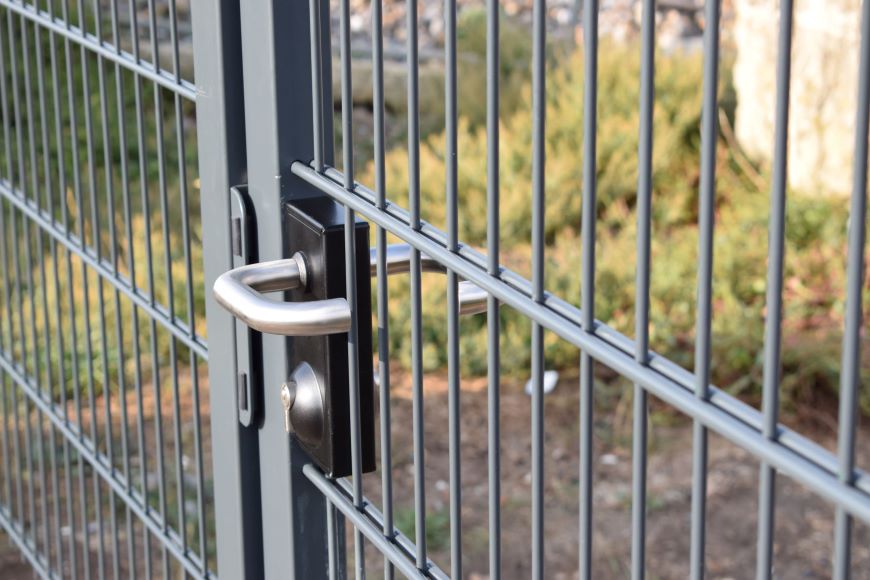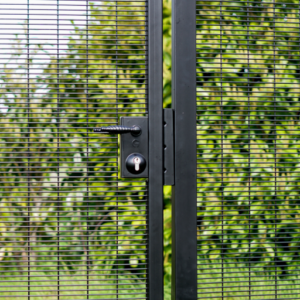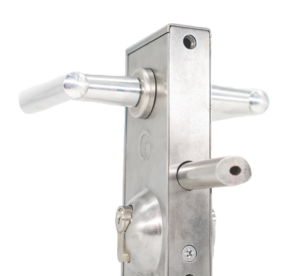As temperatures drops and rain falls, it isn’t just us that need some extra measures to keep warm and functioning.
Your outdoor gates and locks may need some extra attention to get through the winter season with no problems.
Luckily, there are a few things you can do to take care of your gate lock throughout the year.
Keep it clean
Your gate is outside all year and is subjected to rain, wind, traffic, and dust at all times. It is therefore no surprise that they will get a bit dirty.
To take care of your gate lock, make sure to clean it once in a while so no dirt or debris get stuck in the mechanism.
You can clean the outside of the lock by wiping it with a clean cloth. You can use warm, soapy water on powder coated, stainless or galvanised locks as these are corrosion resistant. Don’t get any water inside the mechanism or cylinder as this can damage it or make it susceptible to freezing.
We recommend you clean your lock cylinder with a graphite spray which can also help prevent the cylinder from freezing. But be careful as graphite sprays can be a bit messy!
Should the inner mechanism have a lot of build-up, wipe it gently with a clean cloth to remove it and then spray the lock mechanism with a light oil. The greasier, the better as the moving metal parts need lubricant in order to move freely.
If your gate lock is in frequent use, a gentle clean every 6 months or so should do; an annual check-up to remove build-up and dirt should suffice if it is used less frequently.
It is always best to check with the manufacturer or place you bought the lock, if you have any doubts on how to best clean your lock.
Keep it smooth
A clean lock is a good start, but as mentioned previously, you need to grease it to work properly.
Locks have lots of moving parts (usually made of metal), and lubricant is necessary to make them move without issues.
A good tip is to take your lock off the gate and out of the lock box if possible and spray the inner mechanism with a light oil (such as WD40). Remove any excess oil before putting it together. Then operate it a few times to make sure the oil is evenly distributed.
To lubricate the inner parts of the cylinder, spray your key with a thin coat of the oil and insert into the cylinder to distribute it. Wipe off any excess and operate it a few times to test all is working properly.
Keep it moving
If your lock is in frequent use, then good job! If not, you need to try to operate the lock and test it regularly to keep any free running parts moving.
When a lock isn’t used often, it can seize up, meaning it might not function properly. This can be the case for locks of side entrances, fire escape routes, or back alleys all of which aren’t in use often. So, in addition to cleaning and greasing the lock, go out and open it a few times every month or two to make sure it works and will work when needed.
Consider the material before you buy
Although not a maintenance tip, considering the material for your lock before buying will go a long way. Material is just one of the considerations to make before choosing your lock. But a stainless-steel lock is a great choice thanks to the corrosion resistance, so if you’re in the market for a new lock, think about going stainless.
Bonus tips to cure a frozen lock:
Has your lock frozen during a cold night? It isn’t uncommon during winter, and although tricks like warming your key with a lighter can work, not everyone carries one all the time, not to mention the potential for burnt fingers!
So, here is a tip to unfreeze it by using something most of us will carry at all times these days: hand sanitiser*.
The alcohol in hand sanitiser lowers the freezing point of water and heats up a frozen lock slowly. Try rubbing a thin coat of sanitiser on your key and insert, but don’t turn it yet!
Let the chemicals work their magic for 30-40 seconds. Then try to carefully wiggle the key to see if it turns. If it doesn’t wait a bit longer and try again.
(*Should you decide to try your luck heating your key with a lighter, please do NOT try this after applying hand sanitiser on your key as hand sanitiser is highly flammable.)
If you want to avoid freezing locks in the future, you can spray the locks with graphite powder. Graphite conducts heat easily and makes it difficult for ice to form within the lock in the first place. This can be messy to deal with, so doing it outside would be advised.
Do you have any other tips on how to take care of your gate lock? Leave a comment below!







